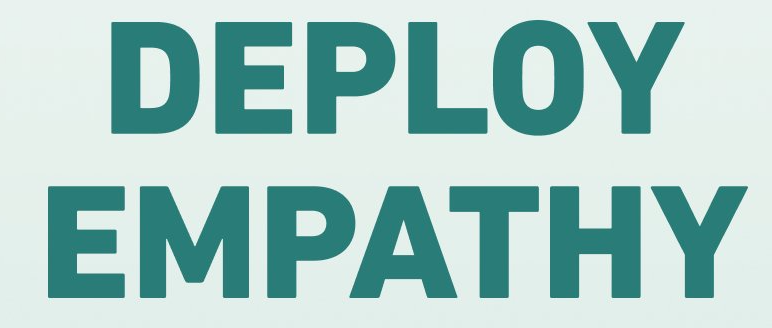[5]
HOW THIS BOOK IS STRUCTURED
This book is organized linearly. It starts with mental models for thinking about customer problems, to figuring out when to do research, to recruiting participants, to preparing for interviews and creating a script, then to analyzing interviews and taking action.
But just because this book is organized linearly doesn’t mean you need to read it linearly. This is intended to be a practical guide, so feel free to skip around and make it useful for yourself. (See Appendix A for the non-linear reading guide.)
PART II: KEY FRAMEWORKS
There are several underlying ideas and mental models that are refer‐ enced throughout this book. This book isn’t heavy on theory, yet it’s important to have these highly-actionable models in mind as you conduct and analyze interviews.
Customer interviews are very, very different from the interviews you might observe in daily life. It’s more like how a therapist talks to their patients than a journalist on TV.
This part is a step-by-step guide to interviewing like a user researcher would and will help you build up your skills before talking to prospective, current, and former customers or clients.
If you’ve already interviewed a customer or ten, you can probably skip this section and go right on to Part IV.
PART IV: WHEN SHOULD YOU DO INTERVIEWS?
This section introduces a mental model for thinking about when to do interviews: project-based research (when you have a specific problem you’re trying to figure out) and ongoing research (for building and updating your general understanding of customer needs). I use this framework for my own research, and it’s also used by Stripe.1 You’ll find your own research flow, and I present this model as a starting point to help you figure out when interviews are the right tool for the job.
PART V: RECRUITING PARTICIPANTS
The next part walks you through one of the biggest challenges for people at first: finding people to talk to, especially if you don’t have any customers. You’ll get specific copy to use to find interview participants on Reddit, Twitter, LinkedIn, Facebook, and email lists. If you already have customers, it includes copy and questions to use via email and short surveys.
PART IV: HOW TO TALK SO PEOPLE WILL TALK
How to Talk So People Will Talk is the most important part of this book.
Interviews are more like acting than a conversation, and this part will teach you specific tactics to use to help people open up and talk about relevant topics.
If you are pressed for time, read this part and then skip to Appendix A to get power packs for specific situations.
PART VII: INTERVIEWS
This is the part you will probably reference the most in the future: the essentials of interviewing. This part gets into the nuts and bolts of interviews and includes scripts for specific scenarios (like cancellation interviews, testing a prototype, or when you’re in the early stages and exploring a problem). It also includes deep dives on specific questions, like how to ask someone what they would pay.
If you’re one to skip around: Do not start using the scripts before reading How to Talk So People Will Talk.
Interviews don’t always go according to plan, and that’s okay. In the last chapter of this part, “Debugging Interviews,” you’ll get guidance on what to do in some common situations and how to recover.
PART VIII: ANALYZING INTERVIEWS
After that, it’s time to dive into analysis methods. This part will introduce you to a simplified version of a customer journey map (it’s okay if you don’t know what that is) and a matrix for determining which problems and tasks might be good opportunities.
PART IX: PULLING IT ALL TOGETHER: SAMPLE INTERVIEW AND ANALYSIS
This section shows you the interview tactics in action and walks through different ways of analyzing interviews, including a long-form version and an analysis for when you’re low on time.
PART X: WHAT NOW?
Here, you’ll find further resources. This book has a narrow focus on the interview skills and tactics that are glossed over in other books. Accordingly, there are a lot of important topics that are intentionally excluded, and this part is a launchpad for exploring those other topics.
APPENDIX A: !HEAT SHEET
Appendix A is your handy guide to skipping around this book. Trying to figure out what to build? Need to know why people cancel? This section has power packs of chapters for specific purposes to make it easy to get the answers you need and get to work.
APPENDIX B: FOR FOUNDERS
Appendix B is specifically for founders of small software companies. It includes discussion of common customer support situations, turning feature requests into research, the differences between support, sales, and research, and one way to use customer research as part of goal setting.
